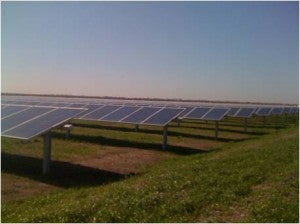 Grover Norquist asks us to “rethink” renewable energy, and I think he may be right. But we differ on the best way to do that.
Grover Norquist asks us to “rethink” renewable energy, and I think he may be right. But we differ on the best way to do that.
He seems to think that Renewable Portfolio Standards (RPS) and similar policies that level the playing field and create markets for renewable energy are “unfeasible,” as opposed to the current subsidies and rules that heavily favor fossil fuels. In his op-ed, Norquist manages to wax poetic about free markets while dodging the billions of dollars in subsidies for fossil fuels and numerous impartial analyses that illustrate how renewable energy saves money for customers and adds much needed revenue to state budgets.
Obscuring the Facts
A recent analysis found that the five states with the highest amount of renewable energy (states that are encouraged by the policies Norquist asks us to rethink) have lower electric rates than the states with the least amounts of renewable energy. In 2009 the Texas PUC declared that the state’s national leadership in wind energy, driven by their RPS, “has had the impact of lowering wholesale and retail prices of electricity.” The Texas State Comptroller said, “After the RPS was implemented, Texas wind corporations and utilities invested $1 billion in wind power, creating jobs, adding to the Texas Permanent School Fund and increasing the rural tax base.”
The story is similar in Colorado where, according to the American Wind Energy Association, the state’s RPS supported a total of 5,000-6,000 direct and indirect jobs, generating $7 million in state revenue and $4 million in leasing revenue for landowners who benefit from the policy. Still, Norquist chooses to focus on a report – not yet released at the time of this writing – by the Beacon Hill Institute, a conservative group founded by Republican politician Ray Shamie, to support some rather speculative claims.
“Choose Your Own Free Market”
Much like the old “Choose Your Own Adventure” children’s books, the fossil fuel industry would very much like to choose their own free market, one that gives fossil fuels an unfair advantage over all other resources. Leaving the discussion there would simply perpetuate the junk science cycle that benefits the fossil fuel industry and their attempts to distract from the massive amounts of federal subsidies that these companies claim they need to continue operations. A discussion on their terms would ignore the very real health impacts fossil fuel use has on infants, pregnant women, the elderly and the general population.
Fossil fuel use directly impacts human health and we subsidize fossil fuels heavily through increasing health care costs and other expenses. A recent report from Harvard Medical School found that these unwitting subsidies cost us $345 billion annually in emergency room visits, health impacts, loss of life and loss of tourism income among other impacts. A true free market is one in which industry takes responsibility for the costs it imposes on society. In this sense, the fossil fuels industry has failed miserably.
Growing Faster Than the Rest of the Economy
While fossil fuels have increasingly clear health costs, the ways in which clean energy production helps the U.S. economy are becoming clearer as well. According to a study from the non-partisan Brookings Institute, renewable energy jobs – and clean tech jobs in general – have grown at a much faster pace than the rest of the U.S. economy, driven largely by state policies like the RPS (the only exception being hydropower). Solar jobs alone have doubled in the U.S. to 100,000 since 2009; many of these local installation and service jobs cannot be exported. Last year alone, U.S. solar energy installations created a combined $6 billion in direct value, $4 billion of which was accrued to the U.S. Furthermore, Jackie Roberts, Director of Sustainable Technologies at EDF, recently wrote that the U.S. was a significant net exporter of solar energy products when the entire value chain is accounted for, with total net exports of $2 billion in 2010.
A Non-Partisan Issue
Perhaps it’s wishful thinking on Norquist’s part, but he certainly knows about renewable energy’s long history as a non-partisan issue – one where nationally recognized conservative Republicans like Texas Gov. Rick Perry and Kansas Gov. Sam Brownback have publicly supported the same policies that Norquist decries. Polls across the country show strong voter support for renewable energy, reaching across political ideology and party lines. In fact, the most recent Republican President and the previous Governor of Texas created the most successful Renewable Portfolio Standard in the country and reportedly consider it one of their proudest achievements in Texas. Speaking in Dallas last year at the American Wind Energy Association’s annual conference, former President Bush noted that “when we diversify our energy supply, we create jobs.”
Mr. Norquist asks us to rethink renewable energy, and I think he may be right. Recently, fossil fuel industry-funded attacks on renewable energy have grown, which makes me think they are beginning to feel the pressure from cleaner renewable energy with no fuel cost. Pseudo scientific claims like those found in Norquist’s op-ed make front page news while the incredible growth rates of renewable energy projects and jobs in the U.S. barely make the back page, which leads me to believe that the media is more focused on reporting controversy than facts. The public remains committed to clean energy, while public officials waver, seeking to catch the political wind. All of this makes me think that we need to recommit to a cleaner energy future with less pollution, healthier children and more local jobs.














